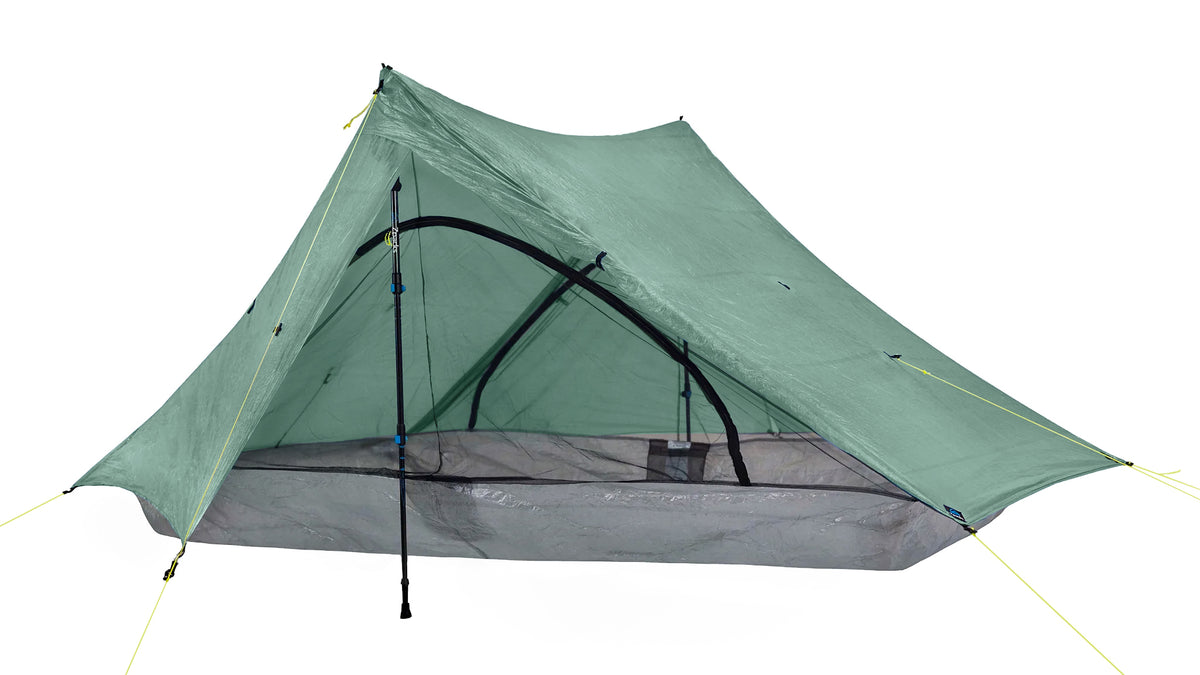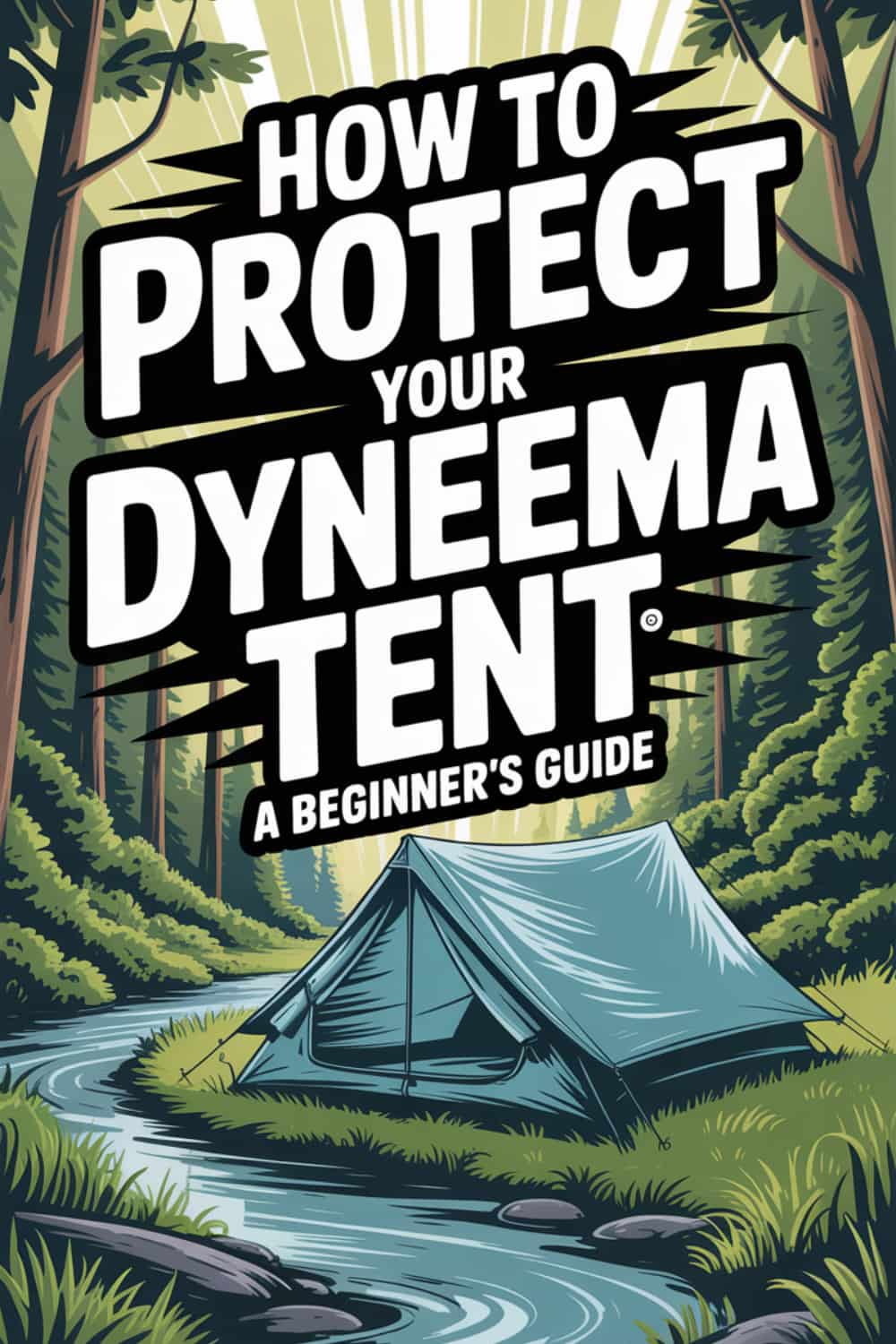Dyneema tents are lightweight marvels but require careful handling. This ultra-strong fabric can support incredible loads yet tears easily from sharp objects. Follow these essential steps to protect your investment.
Choose the Right Campsite
Flat, debris-free ground is your tent's best friend. Avoid slopes that create uneven tension and thorny vegetation that can puncture the fabric.
Look for these campsite features:
- Level terrain with good drainage
- Natural windbreaks without overhead hazards
- Shaded areas to reduce UV exposure
- Low-traffic zones away from foot traffic
Pro Tip: Spend extra time scouting your campsite. The five minutes you invest in finding the right spot can save you hundreds in tent replacement costs.
Avoid ridgelines where wind can turn your shelter into a sail, and always scan for loose branches that could fall during the night.
Protect Against UV Damage
While Dyneema handles UV exposure better than most fabrics, prolonged sun exposure still degrades the material over time. In harsh climates, expect your tent's lifespan to drop to around 4 years compared to milder conditions.
UV Protection Strategies:
- Pitch in shade whenever possible
- Use UV-protective sprays like Tent & Gear SolarWash
- Store indoors between trips
- Apply treatments early for best results
Remember: UV damage is cumulative and irreversible. Every hour in direct sunlight gradually weakens your tent's fabric.
Master Proper Setup Technique
Poor setup technique causes more tent damage than rough terrain. Follow these steps for every pitch:
- Lay the tent flat and close all zippers
- Stake corners at 90-degree angles with gradual tension
- Set poles to manufacturer specifications (check your manual)
- Manage guy lines progressively, balancing tension across all lines
Key principle: Gradual, even tension prevents seam failure. Overtightening stresses the fabric; undertightening creates flapping that weakens seams.
Bonded seams are more vulnerable to stress than sewn construction, so pay special attention to these areas during setup.

Keep Heat Sources Away
Dyneema melts at relatively low temperatures and heat damage voids your warranty instantly. The fabric won't burn, but it will turn into useless plastic wrap.
Heat Safety Rules:
- Maintain serious clearance between stoves and tent walls
- Position cooking areas well away from your shelter
- Use stove jacks when running chimneys through fabric
- Avoid pitchy wood and synthetic fire logs that create sparks
- Install spark arrestors to catch flying embers
Critical Warning: One spark from your stove can end your camping trip. There's no repairing melted Dyneema.
Clean and Store Properly
Dyneema doesn't need frequent cleaning—only wash when actually dirty. Overcleaning can damage the fabric's protective treatments.
Cleaning Process:
- Set up the tent first (you can't clean what you can't reach)
- Use mild laundry detergent and warm water
- Wipe gently with a soft sponge
- Rinse thoroughly to remove all soap residue
- Air dry completely before packing
Storage Tips:
- Store in breathable cotton bags instead of stuff sacks
- Roll, don't stuff your tent
- Keep in a cool, dry place away from direct sunlight
Pack and Transport Safely
Aggressive packing destroys expensive tents. These shelters aren't built like heavy car camping tents that can survive rough handling.
Safe Packing Method:
- Use oversized stuff sacks instead of compression sacks
- Fold and roll gently, varying crease patterns each time
- Remove all stakes and loosen guy lines first
- Position tent mid-pack near your spine for balanced weight
- Keep sharp objects away from the fabric
Golden Rule: Pack it dry, pack it loose, pack it smart. Your wallet will thank you when you're not buying replacement gear.
Inspect for Early Warning Signs
Regular inspection catches problems before they become expensive failures. Check your tent after every trip and before each season.
What to Look For:
- Fabric loosening or stretching, especially on the tent bottom
- Micro tears around doors, corners, and stress points
- Fraying stitches that allow water penetration
- Peeling seam sealant that needs replacement
- Sticky or rough zippers that indicate dirt buildup
Early detection means repairs are still possible. Ignore these signs, and you'll be shopping for a new tent sooner than expected.
Final Thoughts
Dyneema tents reward careful handling with years of reliable service. Treat your shelter with respect, follow these guidelines, and you'll enjoy many successful adventures with gear that performs when it matters most.
The key is developing good habits from day one. With proper care, your Dyneema tent will be a trusted companion for countless outdoor adventures.








